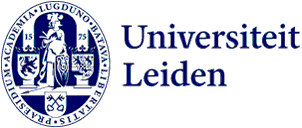
Half a million for X-ray research to conserve masterpieces
Professor of Computer Science Joost Batenburg has received half a million euros from the Dutch Research Council (NWO) to improve the conservation of historical paintings with 3D X-ray imaging.
‘I’m really pleased with this grant’, says Joost Batenburg. ‘Particularly because it means my long-standing partnership with the Rijksmuseum will be able to continue. This will be our third project together. It is fantastic because we have the chance to achieve all sorts of things together.’ Also involved in the project, alongside Leiden University and the Rijksmuseum, are researchers from Centrum Wiskunde & Informatica (CWI, the national research institute for mathematics and computer science in the Netherlands), the University of Antwerp and Cambridge University.
Batenburg has received the grant for the Flexible X-ray Laminography for Art (FLEXART) project. He and other researchers will develop methods to create 3D images of historical paintings. For other artworks, you can use a CT scan (computed tomography), which involves taking X-ray photos from different angles. Then you can create a 3D image of the artwork. That does not work with a flat painting because you can’t see anything on photos taken from the side.
Paintings may be flat but they often consist of different layers of paint. By combining knowledge about the chemicals in the paint with 3D X-ray techniques, Batenburg wants to create images of the different layers of paint.
Insight and conservation
There are various reasons for conducting this research, says Batenburg. ‘The 3D image is important for the conservation of masterpieces. You can see how the paint layers are doing. And the 3D image provides insight into the way in which the artist constructed the painting. Old masterpieces often had layers applied to them at a later date. These techniques will enable us to separate these layers. Then you may also be able to see whether a painting is genuine.’
Conserve for future generations
The NWO grant is part of the call ‘An Integrated Approach to the Scientific Study and Conservation of Art – Tracing change (NICAS)’. The aim is to understand the entire creation process of objects and what they would originally have looked like. It is also to gain insight into the processes that occur in objects over time and cause them to change. Then they can be conserved in the best possible way for future generations. Two University of Amsterdam projects have also received a grant within the call. The projects will receive 1.42 million euros in total from NWO.
Text: Dagmar Aarts
Photo: Unsplash
